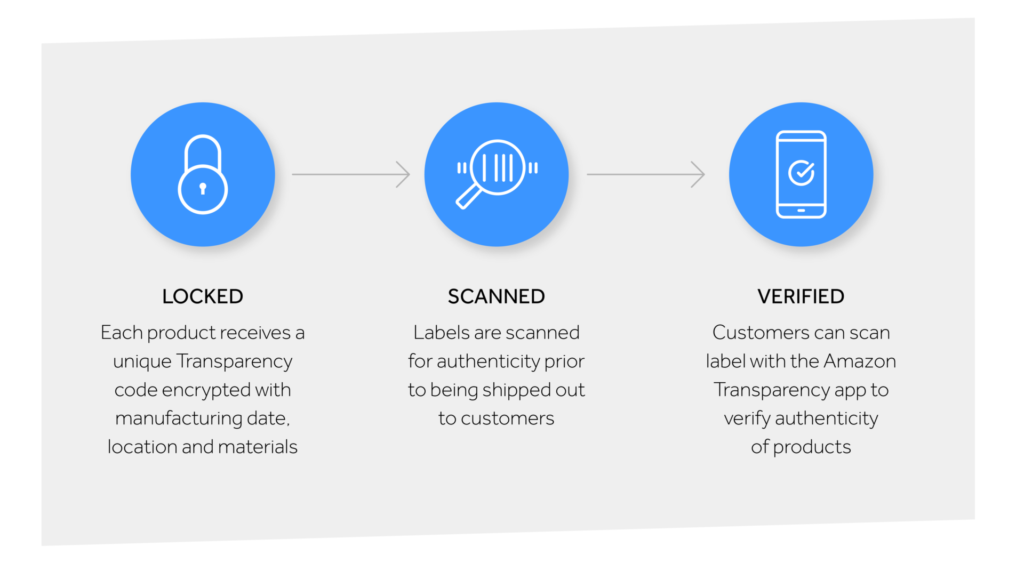
With more people shopping online, building a solid brand presence on ecommerce marketplaces is now a key focus for many retailers. Unfortunately, selling online can open the door to counterfeiters trying to capitalize on a brand’s cachet, resulting in lost revenue and customer trust.
According to Amazon’s Brand Protection Report, there were over 10 billion fraudulent listing attempts in 2020. So how do you ensure your customer is getting the right message, and the right product, straight from your brand on the world’s largest ecommerce marketplace? Amazon’s Transparency program was developed to protect brands and combat bad actor attempts through innovative technology.
First launched in 2018, Transparency is a serialization service that functions to proactively prevent inauthentic products from being sold on the marketplace. It’s part of Amazon’s Brand Protection Program, which ensures security for sellers and builds trust for customers. Current Transparency participation exceeds 15,000 brands and has expanded to 10 countries in just a few years.
Sellers must meet the following criteria to be eligible for the program:
- Be a brand owner registered with Amazon Brand Registry
- Provide GTIN, UPC, or EAN codes for each product
- Apply unique Transparency codes on each unit
Once verified and approved, a brand owner can request Transparency codes for each product they want to include in the program. This will essentially “lock down” the requested ASINs so only the registered brand or authorized sellers can list the product. Each unique code is affixed to individual units and is encrypted with the item’s manufacturing date, location, and materials. Once in the FC (FBA or FBM), the labels are scanned for authenticity prior to being shipped out to customers. Upon receiving the product, the customer can scan the label with the Amazon Transparency app to verify authenticity of the products they’ve purchased, strengthening trust in the brand. While Transparency has proven to be successful against counterfeiters, it’s ultimately a brand protection tool that goes beyond targeting specifically counterfeit goods. However, Transparency doesn’t block other sellers from selling products under your brand, it is only meant to prevent inauthentic products from being presented and sold to customers using the brand name.
While Transparency has proven to be successful against counterfeiters, it’s ultimately a brand protection tool that goes beyond targeting specifically counterfeit goods. However, Transparency doesn’t block other sellers from selling products under your brand, it is only meant to prevent inauthentic products from being presented and sold to customers using the brand name.
Transparency can also:
- Prevent the wrong version of a product from being listed, as all sellers listing program-enrolled products are required to provide the Transparency code prior to listing the item.
- Use Amazon’s internal checks to identify and block any products that have differences in materials, color, or market compliance. Any units that fail these checks are investigated.
Pricing information can be inquired here. The cost to brands reduces based on the volume of codes required. Potential labeling cost increases may occur with the addition of an over-label or the printing of updated product labels. Brands are able to choose which products to enroll in the program, and can make strategic decisions around which ASINs are highest risk for bad actors to target.
Brands can track Transparency’s influence on their enrolled product listings through Brand Reports. This includes reporting of suspected copyright infringement, unsuccessful code scans, blocked listing attempts, and more useful data points to help analyze Transparency’s impact.
Brand participation in Transparency increased by more than 50% between 2019 and 2020 and protected over 500 million product units last year.
Are you interested in reducing counterfeits? Contact us to learn more about the benefits of protecting your brand experience with Transparency.
 Back to all
Back to all








